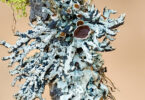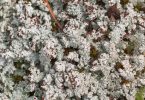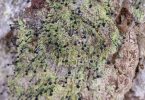Rock Tripe lichen easily found and distinguished. Noted by any casual hiker encountering boulders or canyon walls. And rock, usually of granitic origin, is the main substrate on which they grow. Generic shape is crudely circular with curled, imperfect edges. Most of the 30 North American species (Brodo, Sharnoff, Sharnoff 2001) are located in the American West. All species placed taxonomically in the Umbilicaria genus.
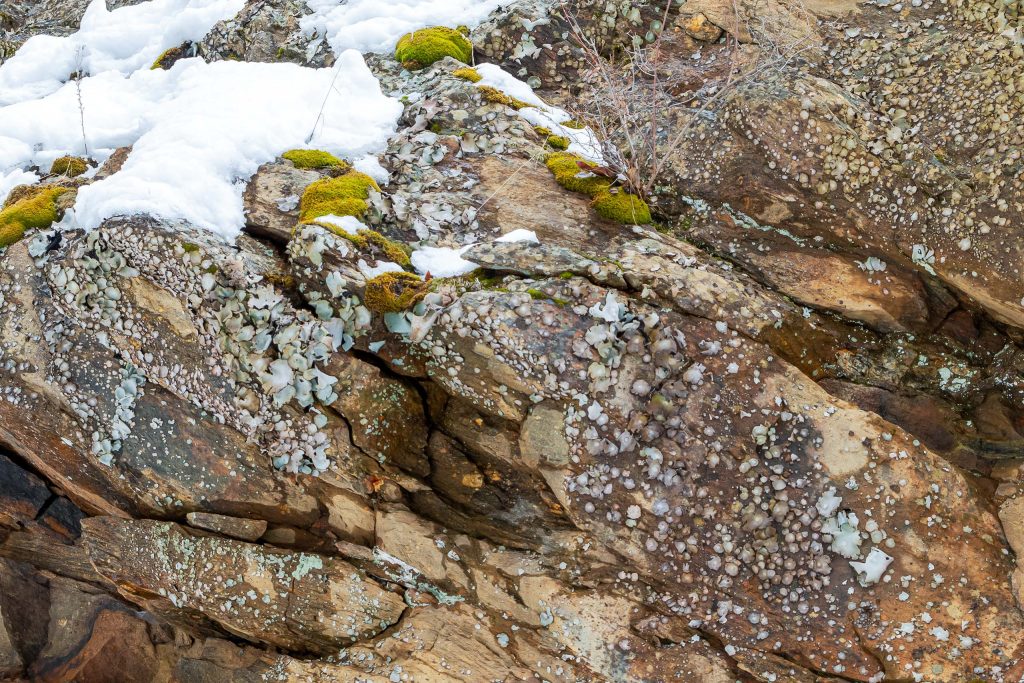
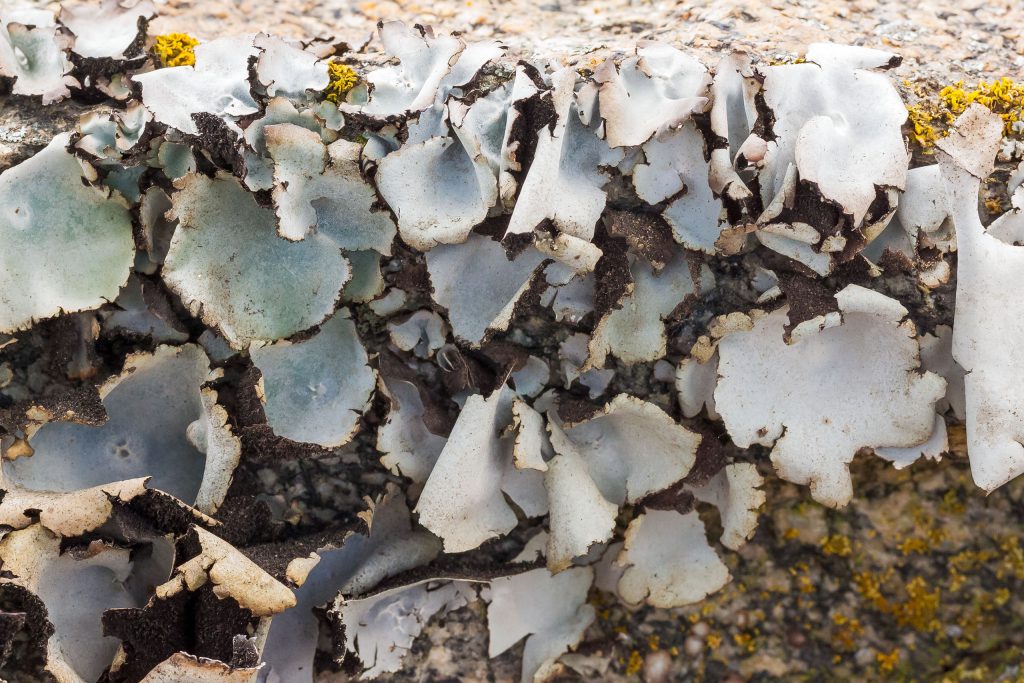
Brodo, Sharnoff and Sharnoff (2001) overview fifteen of the thirty Rock Tripe species documented in North America. Six species can commonly be found in west-central Montana (McCune & Geiser 2009): Umbilicaria americana [Frosted Rock Tripe], Umbilicaria hyperborea [Blistered Rock Tripe], Umbilicaria phaea [Emery Rock Tripe], Umbilicaria polaris [Salty Rock Tripe], Umbilicaria polyphylla [Petaled Rock Tripe] and Umbilicaria torrefacta [Punctured Rock Tripe].
Rock Tripe Species Accounts
U. americana is the only Rock Tripe with a white thallus (circular vegetative body). The thallus does not entirely fasten to the surface. The thallus center (umbel) is the point of attachment. The edges angle and curve upwards in various degrees. Also distinguishing are the black rhizines (root-like structures for holding fast to rock) on the thallus underside. This lichen is numerous on steep rockfaces (canyons et al). Easily seen from trails because of color and size (largest Umbilicaria, mostly 3″ in diameter).
Umbilicaria hyperborea have distinct brown wrinkled thallus surface. Technical name for this wrinkling is rugose. The wrinkles have round ridges and compact to another. Apothecia dot the thallus. Habitat centered on unshaded rock outcrops. About 2″ in diameter.
Umbilicaria phaea has a rounded brown thallus that has a smooth surface, key ID mark. Embedded in the thallus are black apothecia (spore producing structures). Habitat is open or partial shade on rock outcrops and talus slopes.
Umbilicaria polaris exhibits gray thallus crusted with salt-like crystals, very obvious field mark. Has abundant apothecia embedded in thallus. Habitat of rock at mid to high elevations. Size < 2″ diameter (McCune & Geiser 2009).
Umbilicaria polyphylla appears brown and lobed. Edges extend upward with robust curling, i.e. not as circular as other Rock Tripe. Lacks apothecia on thallus, mostly smooth otherwise. Recorded at 3″ diameter.
Umbilicaria torrefacta has cracks in the brown thallus that appear as skull-like sutures in form. Ragged and see-through describes the edges of the thallus. Apothecia are common in the thallus. About 2″ in diameter growing on exposed or sheltered rock.
References
Brodo, I. M., Sharnoff, D. S. & Sharnoff, S. (2001). Lichens of North America. New Haven and London: Yale University Press.
McCune, B. & Geiser, L. (2009). Macrolichens of the Pacific Northwest (2nd ed.). Corvallis OR: Oregon State University Press.










